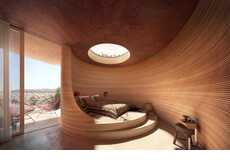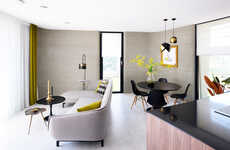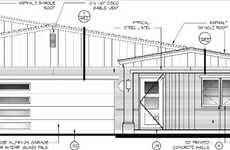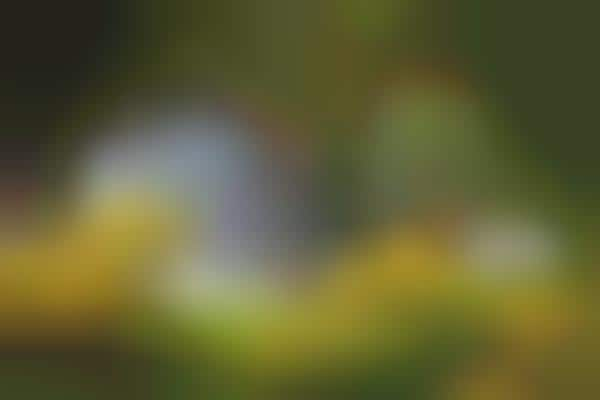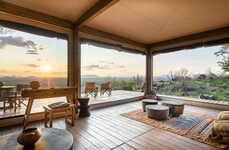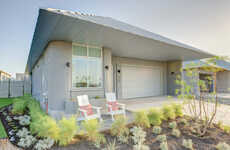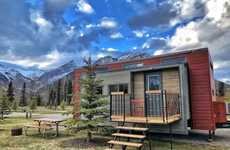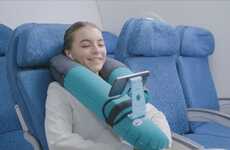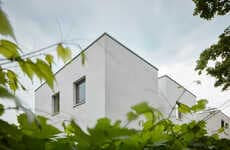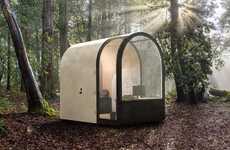
The Fibonacci House is the First Fully 3D-Printed Home on Airbnb
Laura McQuarrie — July 9, 2021 — Art & Design
References: airbnb & designtaxi
There are a steadily increasing number of 3D-printed homes around the world and travelers can now stay in the fully 3D-printed Fibonacci House on Airbnb. This first-of-its-kind listing on Airbnb is located in British Columbia, Canada and it gets its name from the famed golden ratio. As such, the rooms and their fixed elements were based on the Fibonacci shape and the house sets itself apart with walls that curve.
The compact 377-square-foot house includes a living area, sleeping space for two adults and two kids, a furnished kitchen, a bathroom and two mezzanine stories. The soundproof home is made from strong concrete, which provides assurance that it will last against the elements.
The house was printed over the span of just 11 days with 20 parts created with 3D printing.
The compact 377-square-foot house includes a living area, sleeping space for two adults and two kids, a furnished kitchen, a bathroom and two mezzanine stories. The soundproof home is made from strong concrete, which provides assurance that it will last against the elements.
The house was printed over the span of just 11 days with 20 parts created with 3D printing.
Trend Themes
1. 3d-printed Homes for Travelers - The potential for fully customizable, quickly-built homes opens up opportunities for the hospitality and tourism industries to offer unique lodging experiences.
2. Curved and Organic 3D Printing Designs - The use of curved and organically-inspired shapes created through 3D printing may disrupt traditional architecture industries.
3. Sustainable and Durable 3D Printing Materials - As 3D printing becomes more prevalent in the construction of buildings, the development of eco-friendly and durable materials is increasingly important.
Industry Implications
1. Hospitality and Tourism - The use of 3D printing offers a unique selling point for hotels and vacation rental platforms like Airbnb.
2. Construction and Architecture - The application of 3D printing in construction poses a potential threat to traditional building design and construction methods.
3. Manufacturing and Materials - The development of sustainable and strong printing materials provides potential opportunities for businesses within the 3D printing industry to address concerns over environmental impact and longevity.
5.5
Score
Popularity
Activity
Freshness

